You can’t find too many mythologies out there that can hold a candle against the epic tales that the Norse mythos has to offer.
That’s because unlike most other mythologies out there, the Northern Germanic religion Norse gods and goddesses are fascinating to read about as they were originally meant to be entertaining stories to tell around a campfire after all.
By far one of the most popular Norse deities around though is Tyr, the almighty god of war, peace treaties and justice.
Tyr is known to be a walking, breathing symbol of justice and valor. He may not have been the strongest god around but he was one of the most skilled when it came to weapon wielding. On top of that, he was no slouch either, as he could still hold his own against formidable foes.
But by far his most notable involvement in the Nordic tales centers around his ability to draft a treaty that could very well satisfy any and all of the parties involved.
Through this gift he could pretty much settle any problems whatsoever, bringing the two parties together and making sure that no further bloodshed would be spilled.
Tyr was also quite a durable fellow too, as not everyone can have their arm ripped clean off by a monster and still come out on top of most ensuing battles.
What makes him even cooler is the fact that he never even cared about losing his arm in the first place. He fights just as he would when he had both of them at his disposal, only really remembering his loss when some other gods would mock him for it, such as Loki for one.
At the end of the day, Tyr is just a walking antithesis, as he would spend an equal amount of time warring and writing treaties, fighting monsters and settling down battles.
He was so beloved that even after he lost his place at the top of the pantheon of gods, the Vikings would still pray to him before every battle, showcasing just how much respect they had for the fallen deity.
So, for today we decided to go over everything there is to know about Tyr. If you are interested in finding out more about the god of war and treaties then keep on reading because things get very interesting very fast when it comes to this warrior:
Who is Tyr?
Tyr is known for being the son of Odin and the half-brother of Baldr, Thor and Heimdall. On top of that he also married Zisa, the harvest goddess, and the two would end up having plenty of children along the way.
In most interpretations, including the Poetic Edda, Tyr is not the same as Thor, Heimdall or Baldr, in fact, he is considered to be a jötunn or a giant that was later on allowed to join the Aesir.
As such, even though he is the son of Odin, being a part of the Aesir, his actual parents are Hymir and Hrodr.
Interestingly enough, even though he is not a part of the Aesir, he is still one of the most venerated gods in the Norse pantheon.
Which Pantheon Does Tyr Belong To?
As mentioned previously, even though he is a jötunn, he has been adopted into the Aesir pantheon. This is the clan or tribe of Odin, and its members are known for their physical prowess and tenacity.
Even so, within this pantheon Tyr is considered to be one of the main deities, to the point where it is believed that in the old times, he was one of the most well-respected members.
Is Tyr Actually Odin?
There are plenty of speculations going around that claim that Tyr may actually be Odin under a different name.
This is because, as we all know by now, Odin is the leader of the Aesir, and the main deity that reigns above everyone else in the pantheon.
This is why many people were confused as to hear that there was another god in the midst that has a similar background as Odin and is said to rule above even Odin himself.
But don’t worry because it is quite easy to explain what actually happened here. Before Odin took over as the leader of the Aesir, Tyr was the mightiest member of the tribe.
He was the leader of the group, and depending on which version you get your info from, Odin either took over because he became stronger than Tyr, or Tyr just lost a lot of his power after losing his arm to Fenrir.
This may seem strange to us in modern times, but do keep in mind that the Norse mythology was worshipped by the ancient Germanic people, and for them a god replacing another one as the supreme deity was nothing special.
If you want another example of something similar happening just look at the Viking Age, as Odin now found himself being replaced by his son, Thor, as the supreme deity.
We even came across a lot of archeological evidence which proves the fact that for a while Thor took the reigns as the most powerful deity, and he withheld his place in the pantheon for quite some time too.
But why was Tyr replaced by Odin? Well, it’s all because the current society of believers had different morals to withhold.
Before Odin’s time, society valued justice and honor above all else, which is why a god that literally represents these values stood at the top of the pantheon.
Everything changed however as wisdom and knowledge took over as the most important principles to withhold.
Later on down the line, as mentioned previously, even Odin himself was replaced by Thor as the supreme deity.
That’s because Thor was meant to represent power above all else, and around this time period, mankind needed their supreme deity to be a fearless brute that could push back against any enemies whatsoever.
How Do You Pronounce Tyr?
Tyr, also known as Tiw, Tii and Ziu, is pronounced as “tear”. Depending on which language you speak of course, different versions apply.
For one you have the English Tiw. This was the name that was given to Tyr from the Proto-Germanic Tiwaz, which roughly translates to “God”.
At the same time, Tiwaz is also believed to share the same root as the Proto Indo-European word for “dyeus”. Regardless of which word you decide to go for, they both translate to “God” or “Deity”.
As far as the Runic alphabet is concerned though, Tyr had the T-rune to represent him, aka the ᛏ. This rune is known as a Tiwaz, and it has always been used to worship Tyr.
The problem with this rune though is that it was used by a certain Deutsch party around the 1940s during a certain Third Reich, so nowadays it is by far one of the least popular runes to find.
Even as a major Norse mythology fan we still urge you that you don’t get this rune tattooed on your body because it is still associated with Neo-Nazism and fascism, so unless you want to be associated with these groups, it’s best to just go for something else instead.
What is Tyr the God of?
As mentioned previously, Tyr is a war god. He is the god of warfare, treaties and justice, as well as the god of valor and honor.
He is believed to be, at his strongest, equal to the likes of Odin, Freya, Heimdall and Thor. Interestingly enough however, most of the time, Tyr’s power is not seen in battle as much as it’s seen when bringing evildoers to justice.
Despite being very capable of destroying his enemies, Tyr instead uses his time to draft treaties that will make sure that the two parties are not fighting one another anymore.
The only time when Tyr is known to use force is when one of the two parties violates the treaty that he created for them. This is when Tyr will personally deal with the offender.
But by far the main reason as to why he was so popular for a while is because Tyr is known as the patron of warriors.
As soon as war broke out, the warriors would engrave the Tiwaz into their weapons and shields to make sure that they got the war god’s blessing backing them up.
There is even a famous scene in the Poetic Edda which showcases this, as the Valkyrie Sigrdrifa urges Sigurd the hero to carve out the name Tyr onto his blade, blade guard and sword hilt so that he could aid him in battle.
We have also come across several amulets and pendants of protection over the years which prove just how respected Tyr was by warriors back in the day.
Was Tyr the Strongest God?
As mentioned previously, even though he rarely actually fought anyone worth talking about, Tyr was still considered to be one of the most powerful gods in the Northern Germanic religion.
You can’t become one of the most respected and trusted members of a group such as Aesir without being able to crack a few skulls in between your armpits after all.
He is even directly mentioned in the Prose Edda by Snorri Sturluson as “the bravest and most valiant […] he has great power over victory in battles”.
Tyr even ended up being known as the chief god for a while, reigning supreme even above the likes of Thor and Odin.
He is said to have won countless battles, defeating his foes with ease without as much as a scratch being inflicted on him.
The problem came however when Tyr lost his arm. It is said that he grew up with Fenrir, a monstrous great wolf that every other god feared because of how powerful he was.
Odin actually devised a plan in order to chain down Fenrir because of this, and he needed Tyr’s help to accomplish it.
It is said that Tyr was the only one that Fenrir trusted, which is why he allowed the other gods to chain him up as long as he could hold onto Tyr’s arm in between his fangs.
The other gods all proclaimed the fact that this was merely a test to see how powerful Fenrir was, but when he failed to break loose from the chains, the other gods went back on their word, keeping Fenrir chained up.
In retaliation, Fenrir bit off Tyr’s arm, reducing his power greatly. This is why it is believed that Tyr was overtaken by Odin, as he was no longer powerful enough to lead the Aesir anymore from this point forwards.
The Most Popular Myths Involving Tyr
There are actually two different myths that are considered to be the most famous ones regarding Tyr. In these stories, Tyr is praised for his courage and selflessness, as he only ever seeks to bring about justice and valor.
One of these stories is the aforementioned Fenrir tale, which we will go over again in greater detail in case you want to know more about that.
But regardless, before we get to that we should first address the first great myth involving Tyr, and that is the following:
One Giant Kettle
The one thing that we can say about the gods and goddesses of Asgard is that they were not known for being bookworms.
While yes, Odin was known as the god of knowledge by many, his favorite pastime had always been drinking and partying with the rest of the Asgardians.
As such, you can imagine just how horrifying of an experience it must have been for them when they realized the fact that in their drunken stupor, they actually ended up running out of mead and ale.
In order to seek the help that they needed, Odin decided to go through a twig divination and an animal sacrifice. Through this it was revealed that in order to get more mead and ale, the Aesir would need to go to the sea jötunn, Aegir and demand his help.
They got to Aegir, but sadly, their hopes were shattered when they realized the fact that Aegir didn’t have a kettle that was big enough to make enough ale for the Aesir.
Luckily, the Aesir had Tyr on their side, and he suddenly remembered that his father (not Odin in this case), had a very large kettle that they could use.
This is where we find out that Tyr is not like his brothers by any means, but that he is a jötunn instead. So, he goes to his father, Hymir, and he demands the five miles deep cauldron that he owned.
As is common for him, of course that Thor would end up accompanying Tyr, as he was by far the most powerful god and the one that would suffer the most from a lack of mead and ale.
On their way there we also get to meet up with the rest of Tyr’s family, such as his grandma, who is known for having nine-hundred heads.
His mother on the other end though looks like any other Aesir that Thor had seen before, which is a reference to the fact that the jötunn were not monstrous creatures by nature.
In fact, most jötunn are not even that large. Sure, you have the occasional giant and nine-hundred headed jötunn, but these are usually the exception, not the standard jötunn you’d find on the road in Norse tales.
But regardless, the two end up hiding in the cauldron and, after a while they get invited to eat with Hymir and the rest of his family.
Tyr and Fenrir
We already talked about this story so we’ll keep this brief for now. The gods didn’t want Fenrir to be free because he posed a threat to the other gods.
As the son of Loki, he was also most likely going to be a part of Ragnarök, or the end of days, so he definitely needed to be chained up.
So, the gods decided to commission the Dwarves to create an unbreakable fetter Gleipnir, and they told the wolf that if he could not escape from under it then he really wasn’t as strong as he was made out to be.
Regardless, fearing imprisonment, Fenrir demanded that Tyr’s arm would be placed in his mouth to make sure that the other gods would free him after the test.
But as soon as he realized his faith he bit off Tyr’s hand, which resulted in Tyr becoming the one-handed god and Fenrir being chained up until the end of time.
This is all of course until he would escape and take his revenge on the Aesir alongside Jormungand, the giant world serpent, Hel, the female ruler of the underworld and Loki himself.
Conclusion
Tyr really was a unique display of power back in the day. He was strong, yes, but he was not the strongest.
At the same time, he was worshipped a lot because of his honor and valor, and of course, because no matter what happened, he would always serve justice to anyone that needed it.
Sadly, he too would end up dying during Ragnarök. Tyr’s last stand takes place against the guardian of Hel’s gates, Garmr, a massive wolf-like creature that took his power from all of the men that you had killed and used it against you.
Many people believe that Garmr is actually Fenrir, but as far as we know, the two are completely unrelated from one another.
Tyr does end up losing his other arm against Garmr though, but before he would succumb to his wounds, he would land a terrible blow to Garmr, killing him before he too would pass away.

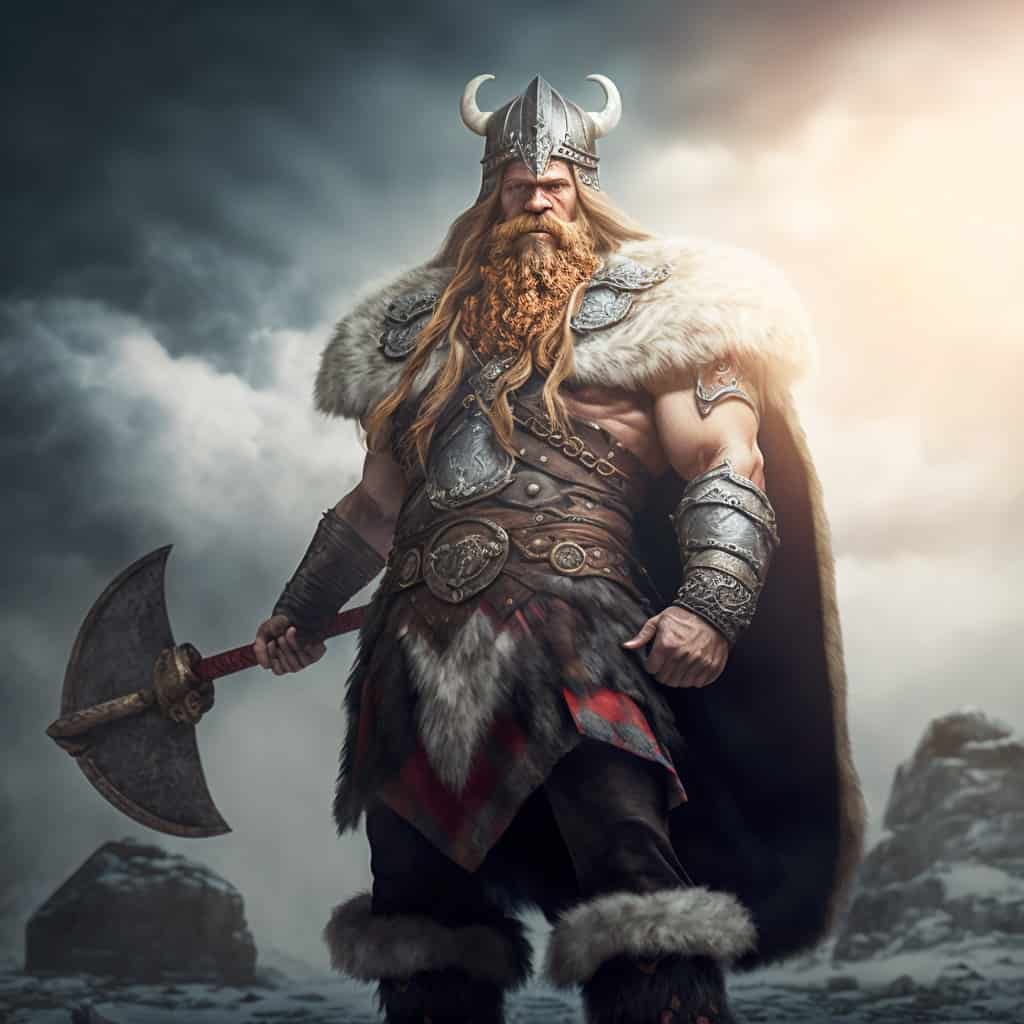

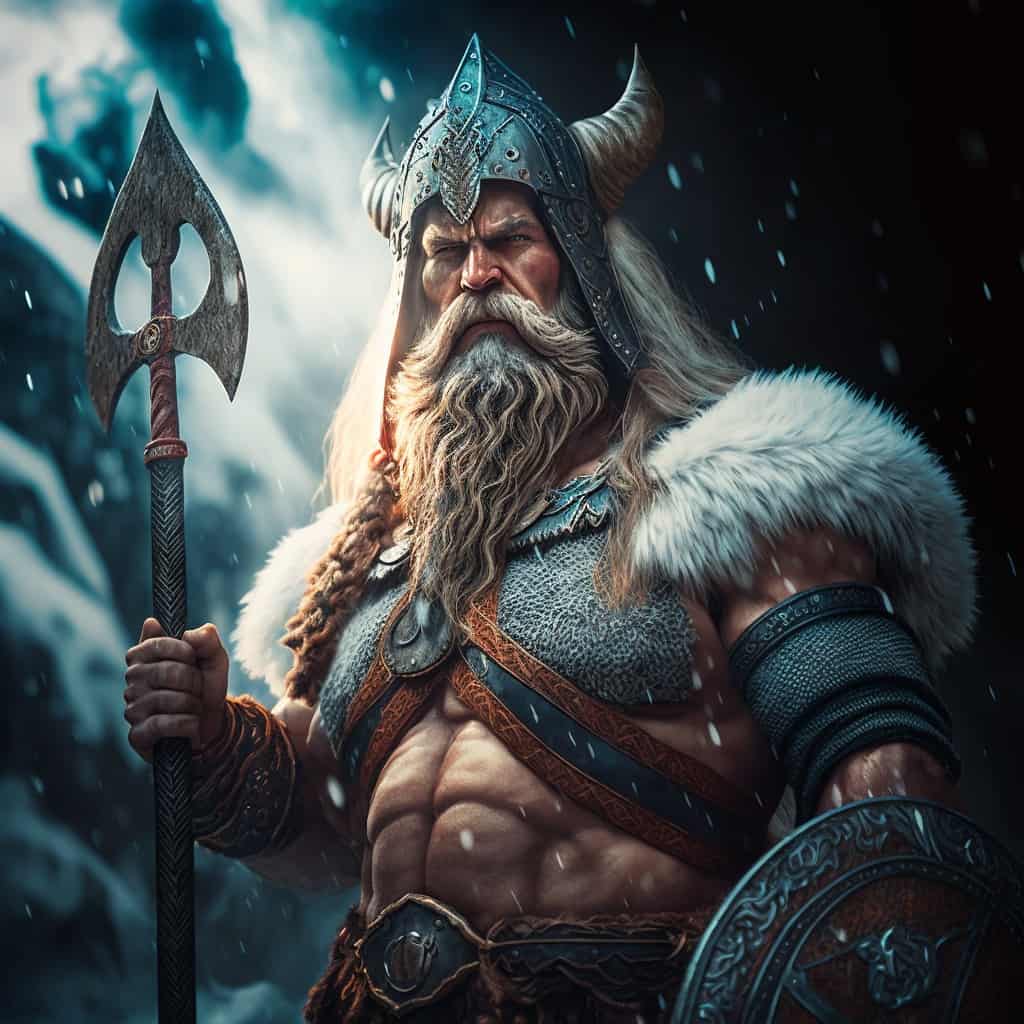

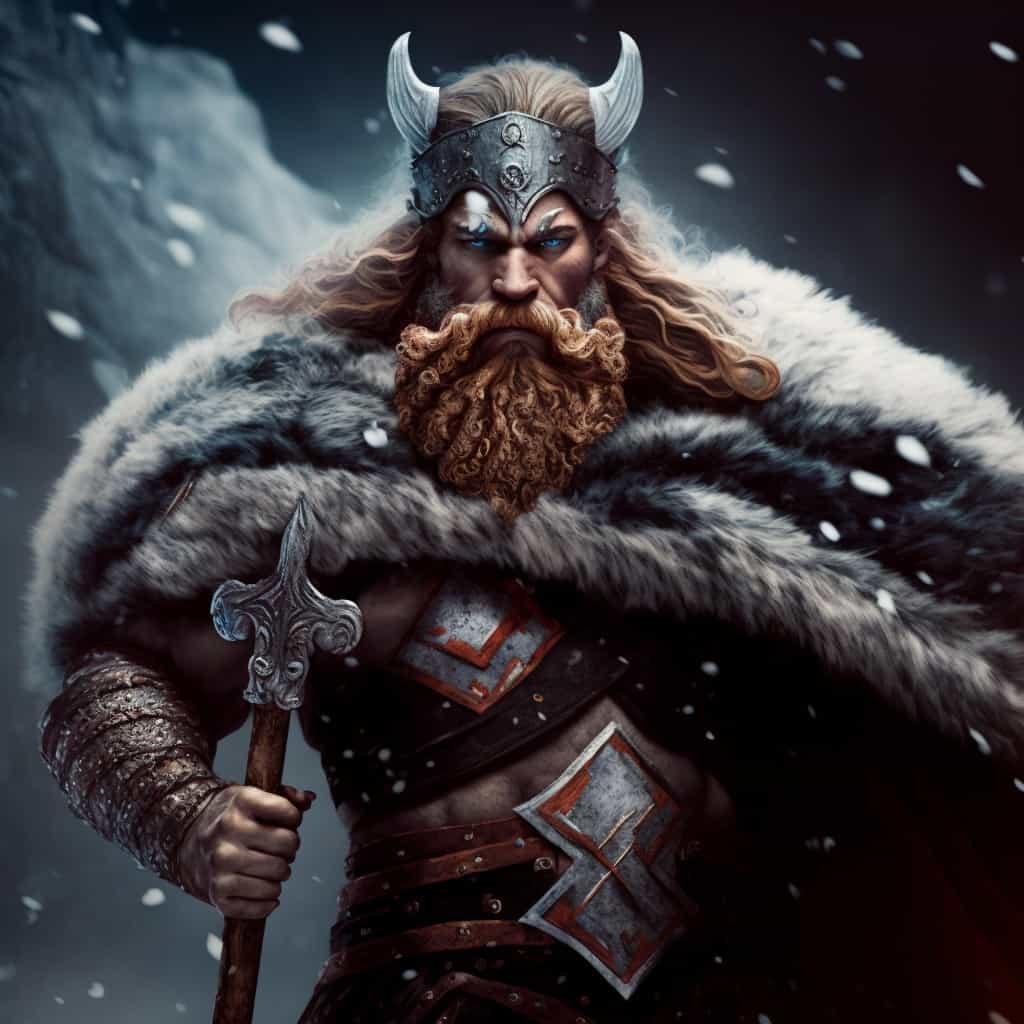






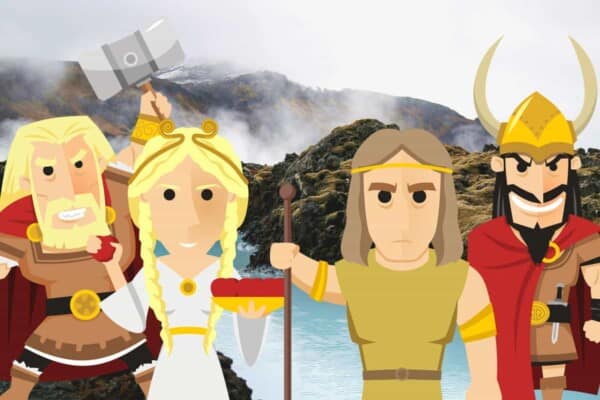



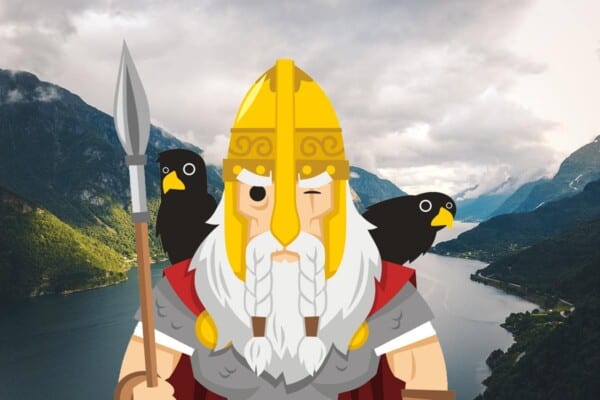


Hi James,
I’m editing a video for YouTube in which the person is telling a Norse mythology story. I found the images in this article really nice and would like to use them in our video. Would you mind allowing me to use them? Thanks a lot.
You can use them but please add a link to this article in the video’s description.